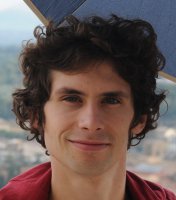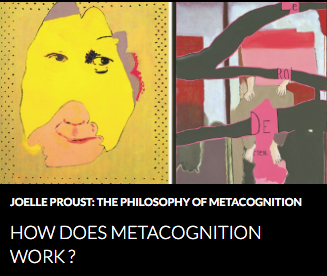A LA UNE
Nominations et financement au DEC
 Yves Boubenec est nommé maître de conférences en neurosciences expérimentales, il sera affecté au Laboratoire des Systèmes Perceptifs (LSP). Yves Boubenec a une formation en neurosciences (doctorat à l'Unité de Neurosciences Information et Complexité, Gif-sur-Yvette). Ses travaux de recherche portent sur la façon dont le contexte comportemental peut induire des changements dans la représentation cérébrale des sons. Un axe de recherche connexe comprend la prise de décision basée sur les statistiques d'un flux acoustique continu.
Yves Boubenec est nommé maître de conférences en neurosciences expérimentales, il sera affecté au Laboratoire des Systèmes Perceptifs (LSP). Yves Boubenec a une formation en neurosciences (doctorat à l'Unité de Neurosciences Information et Complexité, Gif-sur-Yvette). Ses travaux de recherche portent sur la façon dont le contexte comportemental peut induire des changements dans la représentation cérébrale des sons. Un axe de recherche connexe comprend la prise de décision basée sur les statistiques d'un flux acoustique continu.
 Maria Giavazzi est nommée maître de conférences en neuropsychologie du langage, elle sera affectée à l’équipe de NeuroPsychologie Interventionnelle.
Maria Giavazzi a une formation en linguistique théorique (doctorat au MIT). Ses travaux de recherche s'articulent autour de deux axes: chercher à
comprendre l'interaction entre la grammaire phonologique et les principes généraux de perception et production de la parole;
d'autre part, rechercher l’interaction entre les connaissances grammaticales et les fonctions exécutives en couplant l'étude des sujets sains et des patients ayant une détérioration progressive des capacités linguistiques.
Maria Giavazzi est nommée maître de conférences en neuropsychologie du langage, elle sera affectée à l’équipe de NeuroPsychologie Interventionnelle.
Maria Giavazzi a une formation en linguistique théorique (doctorat au MIT). Ses travaux de recherche s'articulent autour de deux axes: chercher à
comprendre l'interaction entre la grammaire phonologique et les principes généraux de perception et production de la parole;
d'autre part, rechercher l’interaction entre les connaissances grammaticales et les fonctions exécutives en couplant l'étude des sujets sains et des patients ayant une détérioration progressive des capacités linguistiques.
 Salvador Mascarenhas est recruté comme enseignement chercheur. Affecté à l'institut Jean Nicod, équipe linguae,
il sera en charge de l'enseignement en linguistique. Il a une formation en linguistique théorique (doctorat à NYU). Ses travaux de recherches situent à l'interface
de la sémantique, de la pragmatique et de la psychologie du raisonnement.
Salvador Mascarenhas est recruté comme enseignement chercheur. Affecté à l'institut Jean Nicod, équipe linguae,
il sera en charge de l'enseignement en linguistique. Il a une formation en linguistique théorique (doctorat à NYU). Ses travaux de recherches situent à l'interface
de la sémantique, de la pragmatique et de la psychologie du raisonnement.
Yves Boubenec, Maria Giavazzi, et Salvador Mascarenhas prendront leurs fonctions en septembre 2016.
 Nicolas Baumard - chercheur au CNRS, membre de l'Institut Jean Nicod, et co-directeur de l’équipe Evolution et Cognition Sociale avec Coralie Chevallier - a été nommé maître de conférences attaché à l'ENS. Il prendra également ses fonctions en septembre prochain.
Nicolas Baumard - chercheur au CNRS, membre de l'Institut Jean Nicod, et co-directeur de l’équipe Evolution et Cognition Sociale avec Coralie Chevallier - a été nommé maître de conférences attaché à l'ENS. Il prendra également ses fonctions en septembre prochain.
 Enfin Shihab Shamma, chercheur au Laboratoire des Systèmes Perceptifs a obtenu une chaire d’excellence PSL.
Shihab Shamma étudie au sein du LSP les corrélats neuronaux de la mémoire auditive à court terme et les effets de contexte dans le traitement de la parole, la discrimination de timbre, et l'apprentissage rapide des patrons temporels.
Enfin Shihab Shamma, chercheur au Laboratoire des Systèmes Perceptifs a obtenu une chaire d’excellence PSL.
Shihab Shamma étudie au sein du LSP les corrélats neuronaux de la mémoire auditive à court terme et les effets de contexte dans le traitement de la parole, la discrimination de timbre, et l'apprentissage rapide des patrons temporels.
MEDIAS
Etienne Koechlin sur France Inter aux côtés de Christian Clot au sujet de l'expédition scientifique "Adaptation"
 Vendredi 24 juin, Etienne Koechlin était sur France Inter dans l'émission de Mathieu Vidard La Tête au carré, aux côtés de Christian Clot au sujet de l'expédition scientifique "Adaptation".
Vendredi 24 juin, Etienne Koechlin était sur France Inter dans l'émission de Mathieu Vidard La Tête au carré, aux côtés de Christian Clot au sujet de l'expédition scientifique "Adaptation".
Le projet "Adaptation 4x30J" est une série d’explorations en milieu extrême menée par l'explorateur Christian Clot pour mieux comprendre les capacités humaines d’adaptation cognitives et physiologique, face aux changements.
Ce projet est mené en partenariat avec plusieurs laboratoires et une équipe de recherche composée de Katia Dauchot et Margaux Romand-Monnier et dirigée par Etienne Koechlin (directeur du Laboratoire des Neurosciences Cognitives (LNC)).
Katia Dauchot est spécialiste des réactions sous stress et de gestion de la peur, elle étudie particulièrement la
motivation. Elle suivra les études liées au niveau de stress en conditions externe. Margaux Romand-Monnier est
doctorante en neuroscience cognitive, ses travaux portent sur les liens entre les différents systèmes de neurones, et la façon dont ils s'adaptent en fonction de l'environnement. Elle travaillera sur ce thème spécifique.
Pour réaliser ces études, une série d’expéditions successives dans les 4 milieux les plus extrêmes de la planète ont été mis en place : Chaud sec dans le Désert du Dasht-e-Lut en Iran en été ;
Froid humide dans les canaux de Patagonie en fin d’hiver ; Chaud humide en Amazonie en début d’automne ; Froid sec en Sibérie orientale en hiver.
Cette année, Christian Clot réalisera successivement 30 jours de traversée dans chacun de ces univers, avec 10 jours entre chaque traversée.
En 2017, il emmenera un groupe de 20 personnes, 10 femmes et 10 hommes, réaliser les mêmes traversées, afin de compléter le programme d’études.
L'objectif est de mener plusieurs programmes d’études cognitives et physiologiques croisées portant sur la prise de décision, l’adaptabilité, la motivation, la collaboration, le leadership et la gestion du risque.
Ecouter l'émission ici.
En savoir plus sur l'expédition Adapation.
Joelle Proust invitée sur le blog de John Schwenkler



Cliquer sur les images pour accèder au blog
The Brains Blog est un forum présentant les travaux de recherche en philosophie et science de l'esprit.
AUDIO / VIDEO
Yann LeCun, "Is machine learning a good model of human learning ?"
 L'enregistrement audio de la conférence de Yann LeCun donnée dans le cadre du Colloquium du département le 5 avril dernier est en ligne sur le site des Savoirs ENS.
Yann LeCunn est titulaire de la Chaire du collège de France, Informatique et sciences numériques (2015-2016) et directeur du centre de recherches de Facebook
sur l’intelligence artificielle.
L'enregistrement audio de la conférence de Yann LeCun donnée dans le cadre du Colloquium du département le 5 avril dernier est en ligne sur le site des Savoirs ENS.
Yann LeCunn est titulaire de la Chaire du collège de France, Informatique et sciences numériques (2015-2016) et directeur du centre de recherches de Facebook
sur l’intelligence artificielle.
Workshop DIVIDNORM 2016

Le colloque DIVIDNORM, Metacognitive diversity across culture: advances and perspectives qui a eu lieu le 31 mai et 1er juin dernier est visible sur
vimeo.
En savoir plus sur le colloque Dividnorm.
EN BREF
#barbarplots, objectifs atteints !

L'opération #barbarplots sur kickstarter a atteint ses objectifs et la campagne de lutte contre les graphiques à barre va pouvoir être menée à bien.
En 30 jours, 173 investisseurs ont permis de réunir 3479 euros, somme qui permettra d'envoyer des t-shirts aux couleurs de
la campagne aux éditeurs des principaux journaux scientifiques. Cette campagne a déclenché un nombre important de réactions et de discussions sur les réseaux sociaux et
le mouvement s'est propagé dans le monde entier.
Retour sur la campagne
En savoir plus sur les réactions provoquées par la campagne
QUELQUES PUBLICATIONS RECENTES
Thomas Andrillon, Andreas Trier Poulsen, Lars Kai Hansen, Damien Léger, and Sid Kouider, (June 15, 2016),
Neural Markers of Responsiveness to the Environment in Human Sleep, The Journal of Neuroscience
Abstract :
Sleep is characterized by a loss of behavioral responsiveness. However, recent research has shown that the sleeping brain is not completely disconnected
from its environment. How neural activity constrains the ability to process sensory information while asleep is yet unclear. Here, we instructed human
volunteers to classify words with lateralized hand responses while falling asleep. Using an electroencephalographic (EEG) marker of motor preparation,
we show how responsiveness is modulated across sleep. These modulations are tracked using classic event-related potential analyses complemented by
Lempel-Ziv complexity (LZc), a measure shown to track arousal in sleep and anesthesia. Neural activity related to the semantic content of stimuli was
conserved in light non-rapid eye movement (NREM) sleep. However, these processes were suppressed in deep NREM sleep and, importantly, also in REM sleep,
despite the recovery of wake-like neural activity in the latter. In NREM sleep, sensory activations were counterbalanced by evoked down states, which,
when present, blocked further processing of external information. In addition, responsiveness markers correlated positively with baseline complexity,
which could be related to modulation in sleep depth. In REM sleep, however, this relationship was reversed. We therefore propose that, in REM sleep,
endogenously generated processes compete with the processing of external input. Sleep can thus be seen as a self-regulated process in which external
information can be processed in lighter stages but suppressed in deeper stages. Last, our results suggest drastically different gating mechanisms in
NREM and REM sleep.
Ngon, C. & S. Peperkamp (2016), What infants know about the unsaid: Phonological categorization in the absence of auditory input. Cognition, 152, 53-60.
Abstract: Acquiring a lexicon constitutes an essential step in early language development. From an early age on, infants store words with well-specified phonological representations, and they can spontaneously activate these representations on the basis of visual information only (Mani & Plunkett, 2010a, 2011). To what extent can infants inspect and categorize phonological representations in the absence of auditory input? The present study focuses on words that infants comprehend but do not attempt to pronounce yet, and introduces a novel methodology based on anticipatory eye-movements. In two experiments, 21-month-old French-learning infants were silently presented with images of familiar objects whose labels they comprehended but did not pronounce yet. We tested whether they could activate the phonological representation of these labels and categorize them based on their length. Infants' performance exceeded chance when the target words were mono- and trisyllabic, but not when they were mono- and disyllabic. Thus, even in the absence of auditory input infants can activate the phonological representation of words they do not pronounce yet, and use this representation to perform a categorization based on word length, provided the length difference is substantial.
Stefano Palminteri, Emma J. Kilford, Giorgio Coricelli, Sarah-Jayne Blakemore (2016, June 20),
The Computational Development of Reinforcement Learning during Adolescence, PLOS Computational Biology.
Abstract:
Adolescence is a period of life characterised by changes in learning and decision-making. Learning and decision-making do not rely on a unitary system,
but instead require the coordination of different cognitive processes that can be mathematically formalised as dissociable computational modules.
Here, we aimed to trace the developmental time-course of the computational modules responsible for learning from reward or punishment, and learning
from counterfactual feedback. Adolescents and adults carried out a novel reinforcement learning paradigm in which participants learned the
association between cues and probabilistic outcomes, where the outcomes differed in valence (reward versus punishment) and feedback was either
partial or complete (either the outcome of the chosen option only, or the outcomes of both the chosen and unchosen option, were displayed).
Computational strategies changed during development: whereas adolescents’ behaviour was better explained by a basic reinforcement learning
algorithm, adults’ behaviour integrated increasingly complex computational features, namely a counterfactual learning module (enabling enhanced
performance in the presence of complete feedback) and a value contextualisation module (enabling symmetrical reward and punishment learning).
Unlike adults, adolescent performance did not benefit from counterfactual (complete) feedback. In addition, while adults learned symmetrically
from both reward and punishment, adolescents learned from reward but were less likely to learn from punishment. This tendency to rely on rewards
and not to consider alternative consequences of actions might contribute to our understanding of decision-making in adolescence.
Philippe Schlenker, Emmanuel Chemla, Cristiane Cäsar, Robin Ryder, Klaus Zuberbühler (2016),
Titi semantics: Context and meaning in Titi monkey call sequences, Natural Language & Linguistic Theory
Abstract :
Cäsar et al. (2013) show that the structure of Titi monkey call sequences can, with just two call types (A and B),
reflect information about predator type and predator location. Using the general methods of Schlenker et al. (2014, 2016, to appear),
we ask what these observations show about the ‘linguistic’ structure of Titi calls. We first demonstrate that the simplest behavioral
assumptions make it challenging to provide lexical specifications for A- and B-calls: B-calls rather clearly have the distribution of
highly underspecified calls; but A-calls are also found in highly heterogeneous contexts (e.g. they are triggered by ‘cat in the canopy’
and ‘raptor on the ground’ situations). We discuss two possible solutions to the problem. One posits that entire sequences are endowed
with meanings that are not compositionally derived from their individual parts (a related idea was proposed by Arnold and Zuberbühler
to analyze pyow-hack sequences in Putty-nosed monkeys). The second solution, which we consider to be superior, takes sequences to have
no structure besides concatenation: the B-call is a general call, the A-call is used for serious non-ground threats, and each call reflects
information about the environment at the time at which it is uttered. The composition of Cäsar et al.’s sequences is seen to follow from
the interaction between call meaning, rules of competition among calls, and more sophisticated assumptions about the environmental context.
In the end, a detailed analysis of the division of labor between semantics, pragmatics and the environmental context yields a simple and
explanatory analysis of sequences that initially seemed to display a complex mapping between syntax and semantics.
Benjamin Spector (2016),
Comparing exhaustivity operators, Semantics and Pragmatics
Abstract :
In this paper, I investigate the formal relationships between two types of exhaustivity operators that have been discussed
in the literature, one based on minimal worlds/models, noted exh-mw (van Rooij & Schulz 2004, Schulz & van Rooij 2006,
Spector 2003, 2006, with roots in Szabolcsi 1983, Groenendijk & Stokhof 1984), and one based on the notion of innocent
exclusion, noted exh-ie (Fox 2007). Among others, I prove that whenever the set of alternatives relative to which
exhaustification takes place is semantically closed under conjunction, the two operators are necessarily equivalent.
Together with other results, this provides a method to simplify, in some cases, the computation associated with exh-ie,
and, in particular, to drastically reduce the number of alternatives to be considered.
Besides their practical relevance, these results clarify the formal relationships between both types of operators.
